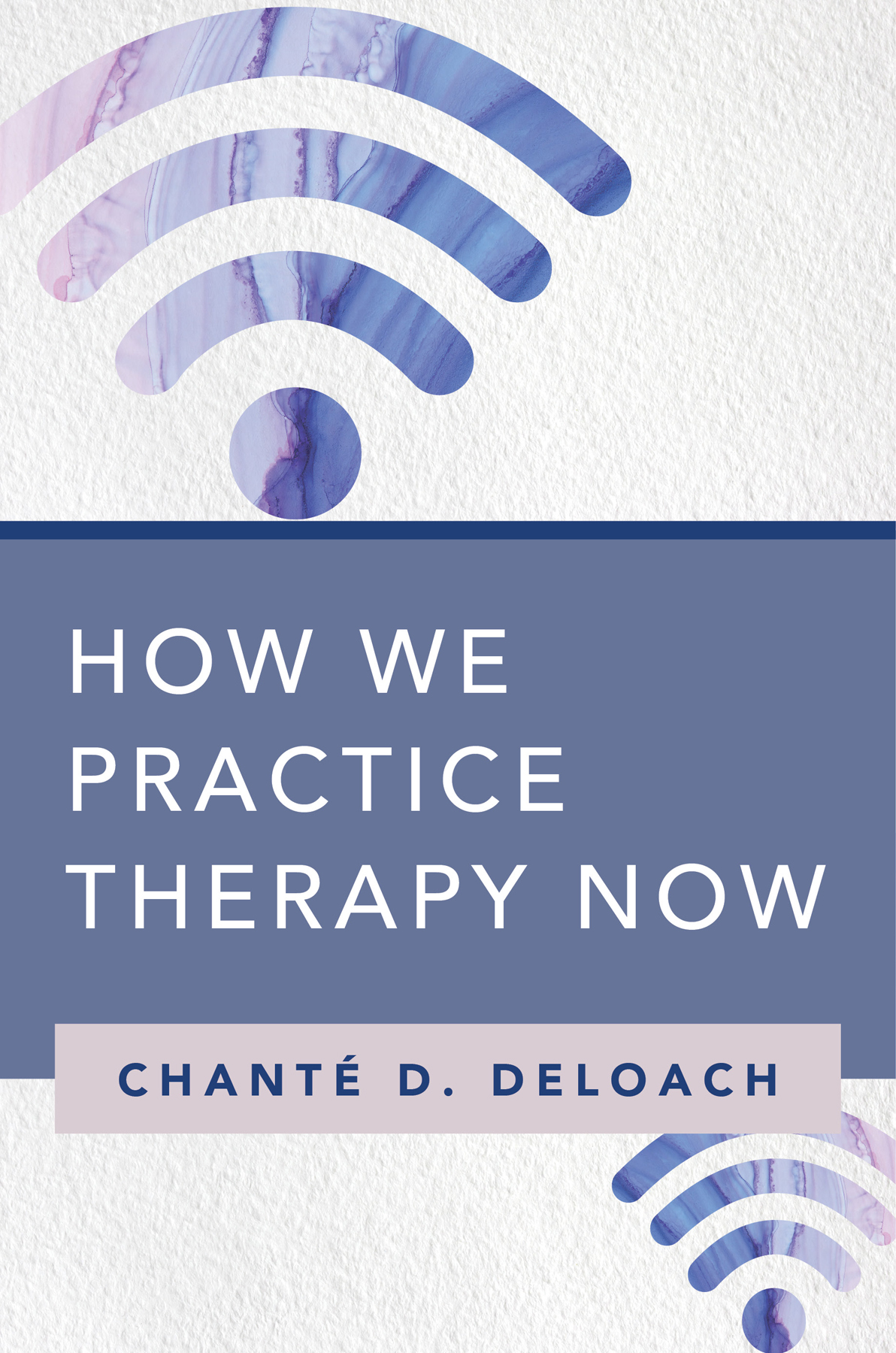Contents
Guide
Page List

To all the therapists holding space through it all.
Contents
March 15, 2020
I hope you are all healthy and managing to stay informed yet centered right now. A lot has changed in the last week since we met, and things are evolving by the moment. We are all being encouraged to practice social distancing to protect our own health and to promote the public health of all. While this is a disruption to our lives, it is also an unexpected opportunity to spend time with loved ones and center our health and wellness practices. Please know that I remain a source of support through the madness. For now, I will be meeting with clients remotely via video (or phone if necessary). Current guidance is that our sheltering at home orders will be in place for 2 4 weeks, and then hopefully we can safely resume meeting in person.
I sent that email to clients one year ago; we continue to meet via video and are primarily sheltering at home with no definitive path of what is next. Multiple times per day I hear the word unprecedented to describe virtually every aspect of this time. In many therapists, the shift to sheltering at home and providing teletherapy provoked mixed emotions. While for some this was an opportunity to work from home and not have the stressors of a commute or the expense of an office, it was abrupt, startling, and even disorienting for many of us, therapists and clients alike. For many, the sudden shift to 100% video therapy was like being forced to drive a stick shift when you are accustomed to driving an automatic, then being forced into traffic with stops on multiple hills! The learning curve for some therapists has been steep and the adjustment slow. I was fortunateI had been offering video-based therapy to a select group of clients for a few years, so I was prepared and knew what to expect. Most therapists were not set up with the infrastructure, equipment, or necessary training to effectively engage in long-term teletherapy with their entire client load from home. Many of us may not have even had a home office, or if we did, it may not have been useful because there was no privacy or soundproofing. For many clients, this shift was just as shocking and unsettling. So many of us told ourselves and our clients that teletherapy would just be for a short time, yet the pandemic continues and we have had to work to adapt to changes of the world even as we discern what is next.
There has been a necessary emphasis on physical health during the pandemic: curbing transmission, effective treatment, and developing a vaccine. Yet, the mental health effects of months of fear and uncertainty and the total upheaval of life as we know it are only now coming into view. There is a historic wave of mental health problems currently unfolding, including depression, substance abuse, post-traumatic stress disorder (PTSD), and suicidality (Czeisler et al., 2020; Panchal et al., 2020). Recent research found that more than 50% of people feel that their mental health has been majorly impacted by the pandemic (Panchal et al., 2020). These numbers have increased as the pandemic continues. Calls to emergency hotlines and online therapy companies have skyrocketed. For example, the online therapy company Talkspace reported a 65% increase in use of their services within the first few months of the pandemic (Associated Press, 2020), and a federal crisis hotline reported ten times the number of calls since the beginning of the pandemic than the number of calls prior to COVID-19 (American Psychological Association [APA], APA Task Force on Race and Ethnicity Guidelines in Psychology, 2020). Early data about the effects on private practitioners is different. Many therapists (59%) have reported a decline in client load (Sammons et al., 2020). Some clients lost their jobs and couldnt afford to continue therapy. Other clients were just doing their best, mentally and emotionally, to survive and couldnt focus on therapy. Some therapists reported an increase (6%) in new clients, which may include the return of old clients (Sammons et al., 2020). The reported increase may also be attributable to existing clients who previously needed sessions on an as-needed basis suddenly requiring weekly sessions.
Hey Doc, I know we havent talked in a while. I think its been about a year or so. I would like to return and jump back in... The world is a lot right now. I hope you have the time and space with everything going on. And I hope you are safe.
This message, from a former client of mine, is one that many of you may recognize. Many of you may, like me, have been unable to say no despite already having a full load. The stress and strain on family relationships and partnerships has been palpable. I have lost count of the number of clients who have contemplated breakups or terminated relationships during the pandemic. The loss has been and continues to be overwhelming. Clients lost (and are losing) jobs, income, opportunities, and loved ones. And so are we. Equally if not more difficult is that therapists are experiencing this crisis alongside our clients. We are all navigating health fears and concerns for ourselves and loved ones, negotiating children being home from school and their needing support with online classes, bearing witness to a racial justice movement, all while holding space for clients who are experiencing the same struggles. During times of collective trauma, such as traumatic events in a workplace, natural disasters, or mass shootings, it is standard practice for external therapists to come in and provide support for the affected community, including the local therapists involved. Here, there are no external therapists to bring in: we are it. This is unprecedented.
Consider Sam, a therapist with a small, but thriving private practice focused primarily on supporting parents of children with ADHD and autism. Sam is also a single mother of a four-year-old son. When the pandemic began and schools closed, she had to transition her practice to fully online and scramble to figure out a plan. She could not work from home and have no one there to watch her son and help with his virtual preschool lessons. He was too young to be left unsupervised. As a single parent, she could not afford to take a leave from her practice, nor did she feel good about just abandoning her clients during a pandemic. She considered hiring a babysitter or asking a friend to help while she was in sessions, but she was too afraid of the COVID-19 risks. Approximately three weeks into the shelter at home orders, Sam knew that something had to change. After multiple discussions with friends and family, Sam decided to temporarily move in with her sister, who lived a few hours away, so that she could have some help. Even though her sister was working and had a daughter of her own, she felt it was the only viable solution. Due to the cramped living quarters with two children and multiple adults in the household, most days Sam is set up to engage in her sessions in a small corner of the bedroom. During the early days of the pandemic, Sams son barged into multiple sessions looking for her or his toys. It became commonplace to hear background noise from the household, the neighbors, or just life happening for her and her clients. The setup was far from ideal, but it was real and human, which her clients got to witness. Although Sam was embarrassed and felt completely unprofessional, they often laughed about it. This setup allowed her to continue to engage in her work, support her clients, and not be alone in supporting her son through the pandemic. Sams clients have struggled a lot during the pandemic. Parents have been stretched thin, and even more thin for her clients with children who have challenges with regulating their emotions, focusing, and concentrating and who thrive with structure. This has been a difficult time for all of her clients. Sam has noticed that working with her clients remotely, in their home environment, has improved her ability to coach parents in real time and provide needed support and affirmation. In some cases, remote therapy has been even more effective than her in-office work with clients. Despite the severe challenges of this shelter-at-home period, Sam has begun considering the ways that teletherapy could become a permanent service that she offers. She has also come to appreciate the flexibility that it allows her for coordinating with her sons schedule, which is especially beneficial to her as a single mother.







